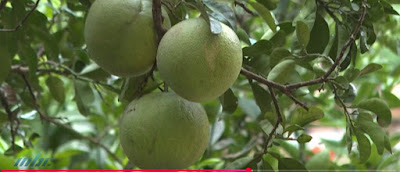 |
| Assoc Prof D.Goburdhun presenting a token of appreciation to Prof A.Dalvie |
1. General Context of Environmental Health Risks
Global Health Burden
-
The presentation highlights data from a WHO Report (2016) which estimates that about 23% of global deaths and 22% of Disability-Adjusted Life Years (DALYs)—a measure combining mortality and morbidity—are directly linked to environmental factors.
-
Globally, this equates to around 12.6 million deaths annually, which could potentially be reduced significantly by addressing modifiable environmental risks.
Key Environmental Risk Factors
The primary environmental risks contributing to this health burden include:
-
- Poor water sanitation and hygiene
- Other factors such as noise, unsafe housing conditions, radiation exposure, and poor land management.
- Indoor air pollution from cooking fuels.
- Exposure to second-hand tobacco smoke
- Ambient (outdoor) air pollution
- Exposure to harmful chemicals (e.g., pesticides)
- Climate change
These factors vary significantly by region, with sub-Saharan Africa experiencing particularly high numbers of environment-related deaths.
2. Pesticide Use and its Health Impacts in South Africa
High Usage of Agrichemicals
-
South Africa is the largest user of pesticides within sub-Saharan Africa, employing over 3000 different pesticide products, including approximately 700 active compounds.
-
Notably, many of these pesticides are banned or restricted in developed countries due to significant health concerns.
Health Impacts from Pesticides
The presentation outlines significant health concerns linked to pesticide exposure, particularly due to their potential as:
-
Endocrine disruptors: Chemicals interfering with hormone systems, potentially affecting growth, reproductive development, and metabolic processes.
-
Neurotoxic substances: Chemicals harming the nervous system, causing cognitive and behavioral issues, particularly in children.
-
Carcinogens: Substances that increase the risk of cancer.
-
Contributors to respiratory illnesses and reproductive disorders.
Evidence of Exposure in the Western Cape
-
Studies conducted in Western Cape agricultural areas showed clear differences in pesticide exposure between farm children and non-farm children.
-
Urinary metabolite measurements (dialkyl phosphates, DAPs), indicators of organophosphate pesticide exposure, were significantly higher among farm children, showing direct exposure differences linked to living or activities on farms.
Reproductive Health Concerns
-
Higher pesticide exposure (evidenced by urinary DAP levels) correlated with alterations in hormonal profiles, including:
-
Luteinizing hormone (LH) and Follicle-stimulating hormone (FSH): Critical for sexual development.
-
Testosterone and estradiol: Essential for puberty and sexual maturation.
-
-
These hormonal disruptions potentially impact sexual maturation and reproductive capabilities among exposed children.
Activities Leading to High Exposure
-
Farm-related activities that contribute significantly to pesticide exposure include:
-
Spraying, mixing, and loading pesticides.
-
Fruit picking, storage, burning, and cleaning equipment.
-
-
Leisure activities adding to pesticide exposure:
-
Eating fruits directly from pesticide-treated fields.
Playing, swimming, or bathing in contaminated water bodies nearby agricultural areas
-
3. Intervention Strategies and Policy Recommendations for Pesticide Exposure
Given these concerns, several critical interventions were suggested:
-
Improved protective measures: Utilizing proper Personal Protective Equipment (PPE) for workers involved in pesticide applications.
-
Reduction in pesticide usage: Advocating alternatives such as integrated pest management (IPM), reduced pesticide dependency, or safer pesticide options.
-
Educational and awareness programs: Enhancing community understanding about the health risks associated with pesticides.
-
Surveillance and monitoring programs: Regular health checks and bio-monitoring of affected populations.
-
Strengthened legislation and regulatory enforcement: To restrict the use of harmful pesticides and manage their proper application and disposal.
Enhanced healthcare accessibility: Improving access to health care facilities for early diagnosis and treatment of pesticide-related health issues.
4. Air Pollution and Respiratory Health among Children
Context and Significance
-
Despite many ambient air pollution-related deaths occurring in low-to-middle-income countries, including South Africa, most research data comes from developed countries.
-
Informal settlements in South Africa, characterized by poor housing conditions, overcrowding, and limited sanitation facilities, experience disproportionately higher exposure to air pollution and related health impacts.
Cohort Study Findings
The presentation highlighted a robust cohort study conducted among primary-school children in four informal settlements in Western Cape, South Africa.
Study Methods:
-
Air pollution exposure was assessed by measuring annual average concentrations of particulate matter (PM2.5) and nitrogen dioxide (NO₂) using land-use regression models tailored specifically for the study areas.
-
Health outcomes measured included respiratory symptoms, asthma indicators, and lung function.
Main Findings:
-
Ambient NO₂ exposure, even below international air quality guidelines, was significantly associated with increased new asthma-related outcomes among children. Symptoms included wheezing, airway inflammation, and ocular-nasal symptoms.
Limitations of the Study:
-
Short follow-up duration (12 months), limiting the ability to identify long-term health outcomes.
-
Limited precision in exposure assessment due to use of distant monitoring stations and variability issues in air pollutant modeling.
5. Policy and Research Recommendations for Air Quality
To mitigate air pollution impacts, particularly in vulnerable populations, the following actions were recommended:
-
Revision of current air quality standards to better protect vulnerable populations, like children in informal settlements.
-
Improvement of housing structures and urban design to reduce pollutant infiltration indoors.
-
Educational programs at community levels, emphasizing environmental management and reducing personal exposure.
-
Provision of real-time air quality information and allergy alerts to allow vulnerable groups to take protective measures.
-
Reducing exposure through urban planning: Increasing green spaces and reducing commuting distances or exposure routes, such as schools and playgrounds located away from heavy traffic zones.
-
Enhanced air quality monitoring infrastructure to capture accurate exposure levels and inform targeted interventions.
Additionally, the study recommended further research with:
-
Longer-term follow-up studies for clearer understanding of chronic impacts.
Improved exposure assessment techniques to provide more accurate data for policymaking.
Conclusion and Implications
Overall, the presentation strongly emphasizes the substantial environmental health risks posed by pesticides and air pollution, particularly affecting children in South Africa. It highlights critical evidence-based insights and provides clear policy and intervention guidelines to mitigate these risks, recommending targeted educational programs, protective regulations, robust monitoring systems, and comprehensive research approaches to safeguard public health, particularly among vulnerable communities.










